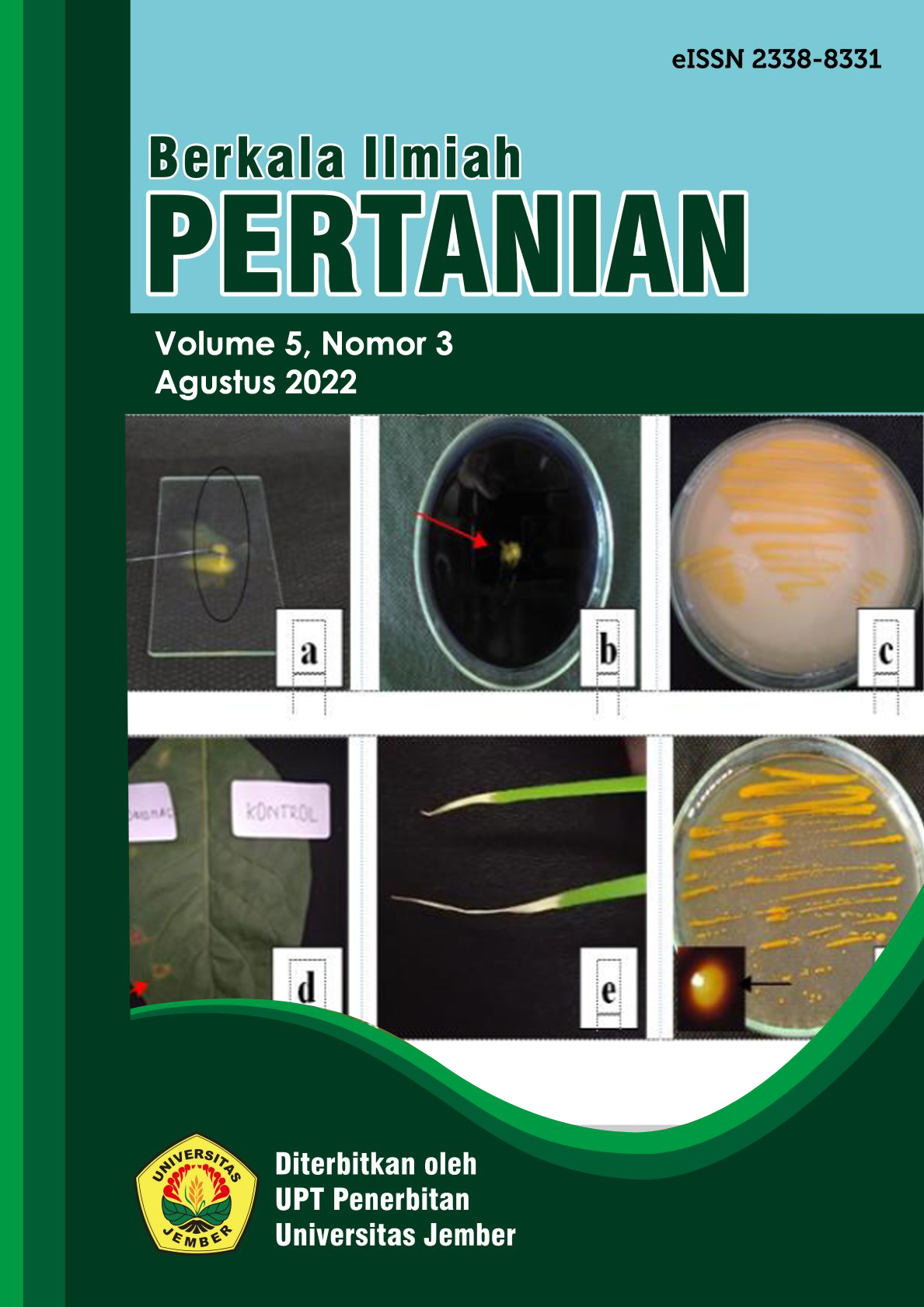PENGARUH PEMBERIAN LIMBAH PADAT IKAN LELE TERHADAP PERTUMBUHAN TANAMAN SAWI PAGODA (Brassica narinosa)
DOI:
https://doi.org/10.19184/bip.v5i3.15913Abstract
ABSTRACT
Mustard pagoda (Brassica narinosa) is a vegetable that has many benefits and high economic value. Mustard Pagoda has the advantage of high nutritional content, larger mustard size and thick leaves. Consumption of mustard greens per capita from 2012-2016 continues to increase but mustard production has decreased. Production reduction in mustard pagoda plants can be optimized by providing additional nutrient requirements derived from organic matter. Overcoming this problem then cabbage mustard cultivation is carried out by adding organic material from catfish solid waste. Catfish solid waste contains high N, P, and K compared to manure. This solid waste has not been used for crop cultivation especially cabbage mustard. This study aims to determine the effect of giving catfish solid waste to the growth of mustard pagoda plants. This research method uses a Completely Random Plan (RAL) with 1 factor, catfish solid waste with 4 treatments that are repeated 6 times. The treatment used is the composition of catfish solid waste which includes A0 = control (without catfish solid waste); A1 = 90 g / polybag; A2 = 180 g / polybag; and A3 = 270 g / polybag. The results showed that the best dosage of 270 g / plant catfish solid waste that affected of canopy wet weight, canopy dry weight, and root dry weight.
Keywords: mustard pagoda, catfish solid waste, organic materials
ABSTRAK
Sawi pagoda (Brassica narinosa) merupakan tanaman sayuran yang mempunyai banyak manfaat dan nilai ekonomis yang tinggi. Sawi pagoda mempunyai keunggulan yaitu kandungan gizi yang tinggi, ukuran sawi yang lebih besar dan memiliki daun yang tebal. Konsumsi sawi per kapita dari tahun 2012-2016 terus mengalami peningkatan namun produksi sawi mengalami penurunan. Penurunan produksi pada tanaman sawi pagoda dapat dioptimalkan dengan memberikan penambahan kebutuhan unsur hara yang berasal dari bahan organik. Mengatasi permasalahan ini maka dilakukan budidaya sawi pagoda dengan penambahan bahan organik dari limbah padat ikan lele. Limbah padat ikan lele mengandung N, P, dan K yang tinggi dibanding pupuk kandang. Limbah padat ini belum digunakan untuk budidaya tanaman terutama sawi pagoda. Penelitian ini bertujuan untuk mengetahui pengaruh pemberian limbah padat ikan lele terhadap pertumbuhan dan produksi tanaman sawi pagoda. Metode penelitian ini menggunakan Rancangan Acak Lengkap (RAL) dengan 1 faktor yaitu limbah padat ikan lele dengan 4 perlakuan yang diulang sebanyak 6 kali. Perlakuan yang digunakan yaitu komposisi limbah padat ikan lele yang meliputi A0 = kontrol (tanpa limbah padat ikan lele); A1 = 90 g/polybag; A2 = 180 g/ polybag; dan A3 = 270 g/ polybag. Hasil penelitian menunjukkan bahwa pemberian limbah padat ikan lele dosis terbaik dosis 270 g/tanaman yang berpengaruh terhadap berat segar tajuk, berat kering tajuk, dan berat kering akar.
Kata kunci : sawi pagoda, limbah padat ikan lele, bahan organik
Downloads
Downloads
Published
Issue
Section
License
Authors who publish with this journal agree to the following terms:
1.Authors retain copyright and grant the journal right of first publication with the work simultaneously licensed under a Creative Commons Attribution-NonCommercial 4.0 International License that allows others to share the work with an acknowledgement of the work's authorship and initial publication in this journal.
2.Authors are able to enter into separate, additional contractual arrangements for the non-exclusive distribution of the journal's published version of the work (e.g., post it to an institutional repository or publish it in a book), with an acknowledgement of its initial publication in this journal.
3.Authors are permitted and encouraged to post their work online (e.g., in institutional repositories or on their website) prior to and during the submission process, as it can lead to productive exchanges, as well as earlier and greater citation of published work (See The Effect of Open Access).




















